Dhruv Nandakumar
Retrieval Augmented Anomaly Detection (RAAD): Nimble Model Adjustment Without Retraining
Feb 26, 2025Abstract:We propose a novel mechanism for real-time (human-in-the-loop) feedback focused on false positive reduction to enhance anomaly detection models. It was designed for the lightweight deployment of a behavioral network anomaly detection model. This methodology is easily integrable to similar domains that require a premium on throughput while maintaining high precision. In this paper, we introduce Retrieval Augmented Anomaly Detection, a novel method taking inspiration from Retrieval Augmented Generation. Human annotated examples are sent to a vector store, which can modify model outputs on the very next processed batch for model inference. To demonstrate the generalization of this technique, we benchmarked several different model architectures and multiple data modalities, including images, text, and graph-based data.
Leveraging Reinforcement Learning in Red Teaming for Advanced Ransomware Attack Simulations
Jun 25, 2024Abstract:Ransomware presents a significant and increasing threat to individuals and organizations by encrypting their systems and not releasing them until a large fee has been extracted. To bolster preparedness against potential attacks, organizations commonly conduct red teaming exercises, which involve simulated attacks to assess existing security measures. This paper proposes a novel approach utilizing reinforcement learning (RL) to simulate ransomware attacks. By training an RL agent in a simulated environment mirroring real-world networks, effective attack strategies can be learned quickly, significantly streamlining traditional, manual penetration testing processes. The attack pathways revealed by the RL agent can provide valuable insights to the defense team, helping them identify network weak points and develop more resilient defensive measures. Experimental results on a 152-host example network confirm the effectiveness of the proposed approach, demonstrating the RL agent's capability to discover and orchestrate attacks on high-value targets while evading honeyfiles (decoy files strategically placed to detect unauthorized access).
Discovering Command and Control (C2) Channels on Tor and Public Networks Using Reinforcement Learning
Feb 14, 2024Abstract:Command and control (C2) channels are an essential component of many types of cyber attacks, as they enable attackers to remotely control their malware-infected machines and execute harmful actions, such as propagating malicious code across networks, exfiltrating confidential data, or initiating distributed denial of service (DDoS) attacks. Identifying these C2 channels is therefore crucial in helping to mitigate and prevent cyber attacks. However, identifying C2 channels typically involves a manual process, requiring deep knowledge and expertise in cyber operations. In this paper, we propose a reinforcement learning (RL) based approach to automatically emulate C2 attack campaigns using both the normal (public) and the Tor networks. In addition, payload size and network firewalls are configured to simulate real-world attack scenarios. Results on a typical network configuration show that the RL agent can automatically discover resilient C2 attack paths utilizing both Tor-based and conventional communication channels, while also bypassing network firewalls.
MIA-BAD: An Approach for Enhancing Membership Inference Attack and its Mitigation with Federated Learning
Nov 28, 2023Abstract:The membership inference attack (MIA) is a popular paradigm for compromising the privacy of a machine learning (ML) model. MIA exploits the natural inclination of ML models to overfit upon the training data. MIAs are trained to distinguish between training and testing prediction confidence to infer membership information. Federated Learning (FL) is a privacy-preserving ML paradigm that enables multiple clients to train a unified model without disclosing their private data. In this paper, we propose an enhanced Membership Inference Attack with the Batch-wise generated Attack Dataset (MIA-BAD), a modification to the MIA approach. We investigate that the MIA is more accurate when the attack dataset is generated batch-wise. This quantitatively decreases the attack dataset while qualitatively improving it. We show how training an ML model through FL, has some distinct advantages and investigate how the threat introduced with the proposed MIA-BAD approach can be mitigated with FL approaches. Finally, we demonstrate the qualitative effects of the proposed MIA-BAD methodology by conducting extensive experiments with various target datasets, variable numbers of federated clients, and training batch sizes.
A Novel Approach To User Agent String Parsing For Vulnerability Analysis Using Mutli-Headed Attention
Jun 06, 2023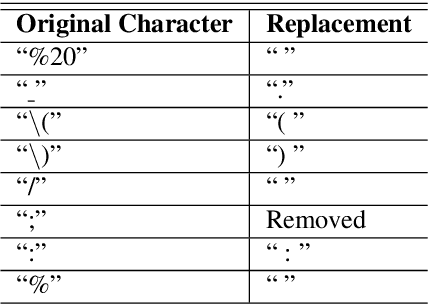



Abstract:The increasing reliance on the internet has led to the proliferation of a diverse set of web-browsers and operating systems (OSs) capable of browsing the web. User agent strings (UASs) are a component of web browsing that are transmitted with every Hypertext Transfer Protocol (HTTP) request. They contain information about the client device and software, which is used by web servers for various purposes such as content negotiation and security. However, due to the proliferation of various browsers and devices, parsing UASs is a non-trivial task due to a lack of standardization of UAS formats. Current rules-based approaches are often brittle and can fail when encountering such non-standard formats. In this work, a novel methodology for parsing UASs using Multi-Headed Attention Based transformers is proposed. The proposed methodology exhibits strong performance in parsing a variety of UASs with differing formats. Furthermore, a framework to utilize parsed UASs to estimate the vulnerability scores for large sections of publicly visible IT networks or regions is also discussed. The methodology present here can also be easily extended or deployed for real-time parsing of logs in enterprise settings.
Zero Day Threat Detection Using Metric Learning Autoencoders
Nov 01, 2022Abstract:The proliferation of zero-day threats (ZDTs) to companies' networks has been immensely costly and requires novel methods to scan traffic for malicious behavior at massive scale. The diverse nature of normal behavior along with the huge landscape of attack types makes deep learning methods an attractive option for their ability to capture highly-nonlinear behavior patterns. In this paper, the authors demonstrate an improvement upon a previously introduced methodology, which used a dual-autoencoder approach to identify ZDTs in network flow telemetry. In addition to the previously-introduced asset-level graph features, which help abstractly represent the role of a host in its network, this new model uses metric learning to train the second autoencoder on labeled attack data. This not only produces stronger performance, but it has the added advantage of improving the interpretability of the model by allowing for multiclass classification in the latent space. This can potentially save human threat hunters time when they investigate predicted ZDTs by showing them which known attack classes were nearby in the latent space. The models presented here are also trained and evaluated with two more datasets, and continue to show promising results even when generalizing to new network topologies.
Anomaly Detection via Federated Learning
Oct 12, 2022
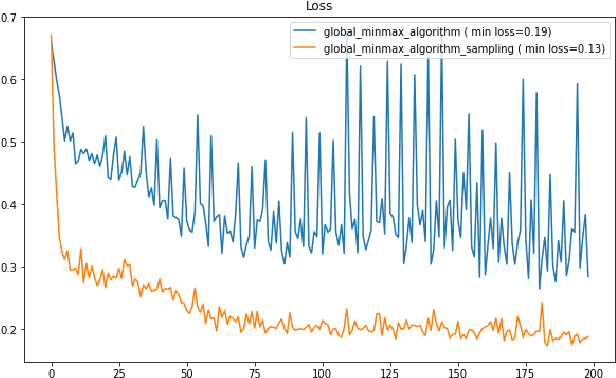
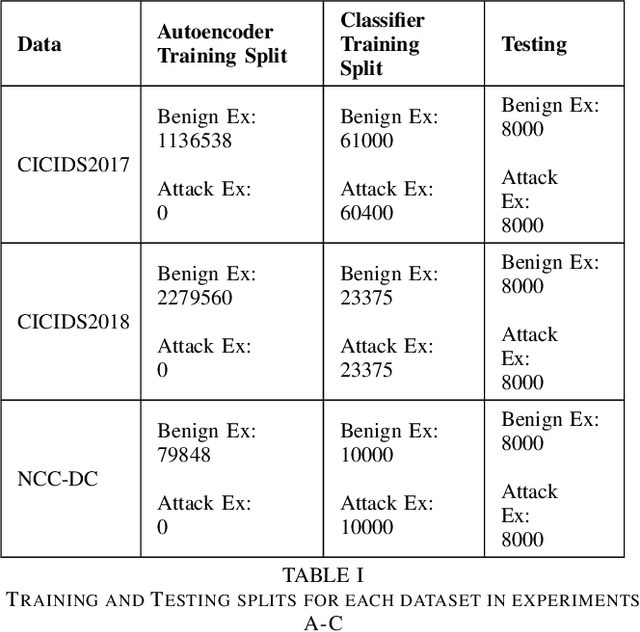
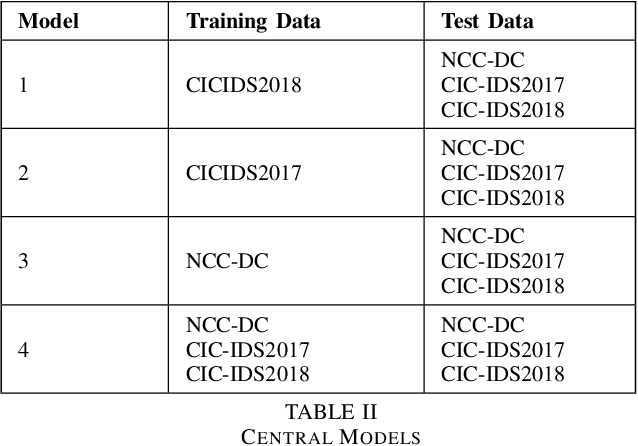
Abstract:Machine learning has helped advance the field of anomaly detection by incorporating classifiers and autoencoders to decipher between normal and anomalous behavior. Additionally, federated learning has provided a way for a global model to be trained with multiple clients' data without requiring the client to directly share their data. This paper proposes a novel anomaly detector via federated learning to detect malicious network activity on a client's server. In our experiments, we use an autoencoder with a classifier in a federated learning framework to determine if the network activity is benign or malicious. By using our novel min-max scalar and sampling technique, called FedSam, we determined federated learning allows the global model to learn from each client's data and, in turn, provide a means for each client to improve their intrusion detection system's defense against cyber-attacks.
Lateral Movement Detection Using User Behavioral Analysis
Aug 29, 2022



Abstract:Lateral Movement refers to methods by which threat actors gain initial access to a network and then progressively move through said network collecting key data about assets until they reach the ultimate target of their attack. Lateral Movement intrusions have become more intricate with the increasing complexity and interconnected nature of enterprise networks, and require equally sophisticated detection mechanisms to proactively detect such threats in near real-time at enterprise scale. In this paper, the authors propose a novel, lightweight method for Lateral Movement detection using user behavioral analysis and machine learning. Specifically, this paper introduces a novel methodology for cyber domain-specific feature engineering that identifies Lateral Movement behavior on a per-user basis. Furthermore, the engineered features have also been used to develop two supervised machine learning models for Lateral Movement identification that have demonstrably outperformed models previously seen in literature while maintaining robust performance on datasets with high class imbalance. The models and methodology introduced in this paper have also been designed in collaboration with security operators to be relevant and interpretable in order to maximize impact and minimize time to value as a cyber threat detection toolkit. The underlying goal of the paper is to provide a computationally efficient, domain-specific approach to near real-time Lateral Movement detection that is interpretable and robust to enterprise-scale data volumes and class imbalance.
Zero Day Threat Detection Using Graph and Flow Based Security Telemetry
May 04, 2022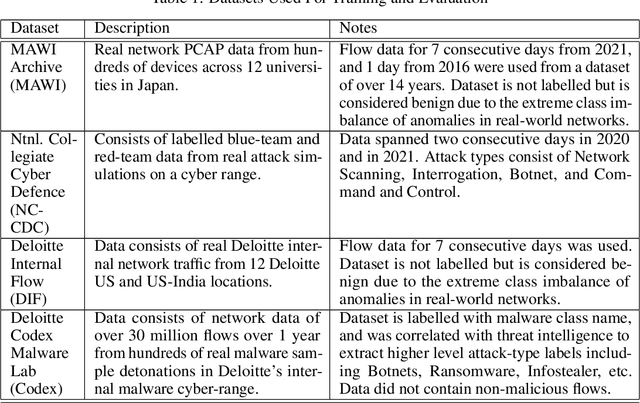

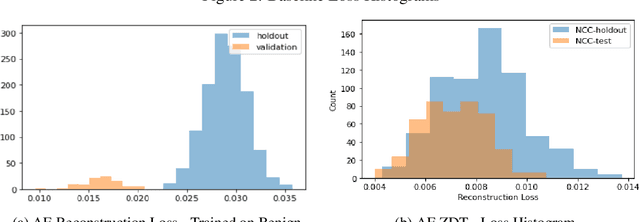

Abstract:Zero Day Threats (ZDT) are novel methods used by malicious actors to attack and exploit information technology (IT) networks or infrastructure. In the past few years, the number of these threats has been increasing at an alarming rate and have been costing organizations millions of dollars to remediate. The increasing expansion of network attack surfaces and the exponentially growing number of assets on these networks necessitate the need for a robust AI-based Zero Day Threat detection model that can quickly analyze petabyte-scale data for potentially malicious and novel activity. In this paper, the authors introduce a deep learning based approach to Zero Day Threat detection that can generalize, scale, and effectively identify threats in near real-time. The methodology utilizes network flow telemetry augmented with asset-level graph features, which are passed through a dual-autoencoder structure for anomaly and novelty detection respectively. The models have been trained and tested on four large scale datasets that are representative of real-world organizational networks and they produce strong results with high precision and recall values. The models provide a novel methodology to detect complex threats with low false-positive rates that allow security operators to avoid alert fatigue while drastically reducing their mean time to response with near-real-time detection. Furthermore, the authors also provide a novel, labelled, cyber attack dataset generated from adversarial activity that can be used for validation or training of other models. With this paper, the authors' overarching goal is to provide a novel architecture and training methodology for cyber anomaly detectors that can generalize to multiple IT networks with minimal to no retraining while still maintaining strong performance.
 Add to Chrome
Add to Chrome Add to Firefox
Add to Firefox Add to Edge
Add to Edge